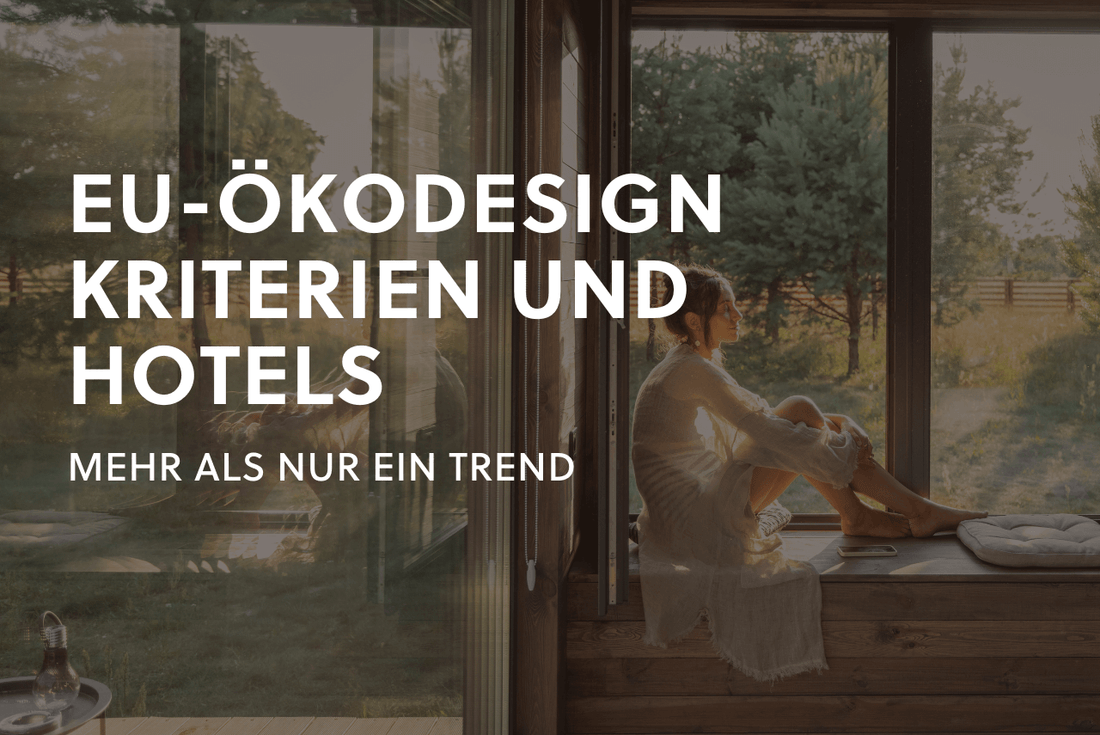
EU Ecodesign Criteria and Hotels: More than just a Trend
Share
Sustainability is no longer a bonus - it is a requirement of guests. The hotel industry is responsible for 5% of global water consumption and 8% of global CO₂ emissions. Hotels must therefore integrate sustainable solutions into their operational strategy. The EU Ecodesign criteria provide a clear guide for making smarter and greener decisions. Compliance with these standards is not only good for the environment - it is also economically beneficial.
What are the EU Ecodesign criteria?
The EU Ecodesign criteria set standards for energy efficiency, durability and recyclability to minimise the environmental footprint of products. For hotels, this means choosing sustainable, cost-effective and long-lasting products that increase both guest satisfaction and operational efficiency.
Why should hotels pay attention to this?
According to Booking.com (2021), 74% of guests expect more sustainable travel options. Hotels that meet these expectations benefit from higher guest satisfaction, increased booking rates and a clear competitive advantage.
In Austria, the government actively supports sustainability in hotels with initiatives such as the Ecolabel for tourism establishments, which offers certification for environmentally friendly practices. There are also grants for energy-efficient renovations and investments in renewable energy systems, helping hotels reduce costs and align with eco-design principles.
Applying circular economy principles benefits the environment while providing financial savings and a stronger market position. Here are the top reasons why investing in sustainable practices is worthwhile:
- Cost savings: Less resource consumption reduces operating and energy costs.
- Stronger brand positioning: Eco-friendly initiatives attract environmentally conscious guests and increase booking rates and profits.
- Reducing environmental impact: Extending the lifespan of products minimizes waste and carbon emissions.
- A longer product lifespan minimizes waste and CO₂ emissions.
- Regulatory security: Compliance with sustainability regulations avoids penalties and ensures future viability.
- Improved guest satisfaction: Sustainable furnishings and materials ensure a positive overall guest experience.
5 Criteria for Sustainable Purchasing Decisions in Hotels
Hotels can set the course for a sustainable future when purchasing new products or services.
1. Procurement & Production
- Prefer high-quality, recyclable materials and avoid difficult-to-recycle blends such as cotton/polyester.
- Prioritize local production to reduce transport emissions and support regional economic cycles.
2. Efficient logistics & installation
- Optimize supply chains through bulk orders and minimize transport routes.
- Choose lightweight designs to reduce emissions and labor during transportation.
3. Use & Maintenance
- Invest in products with modular designs to facilitate repairs and extend lifespan.
- Choose removable, washable covers for better hygiene and longer use.
4. Guest experience & communication
- Products that promote transparency with QR codes or digital product passes to inform guests about sustainable measures.
- Highlight carbon savings and sustainable initiatives in guest communications to increase engagement and awareness.
5. End-of-Life Management
- Invest in product design that allows disassembly for easy recycling.
- Work with suppliers who offer a take-back system for recycling or refurbishment.
Conclusion
Implementing the EU Ecodesign criteria is not just about compliance, it is also about staying ahead in a competitive market. For hoteliers and managers, it is an opportunity to combine cost savings, compliance and guest satisfaction in a single, impactful strategy. By investing in sustainable practices, hotels can create excellent guest experiences, enhance their brand reputation and ensure their long-term success.
The future of the hotel industry is sustainable. Are you ready to take the path?
